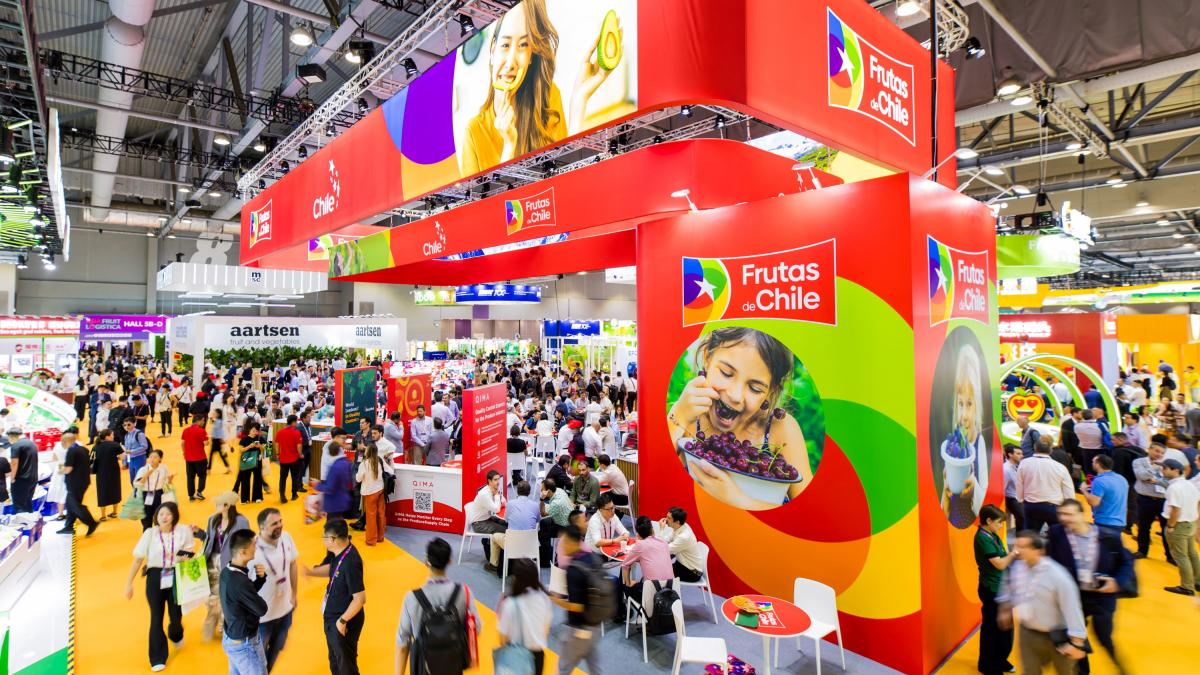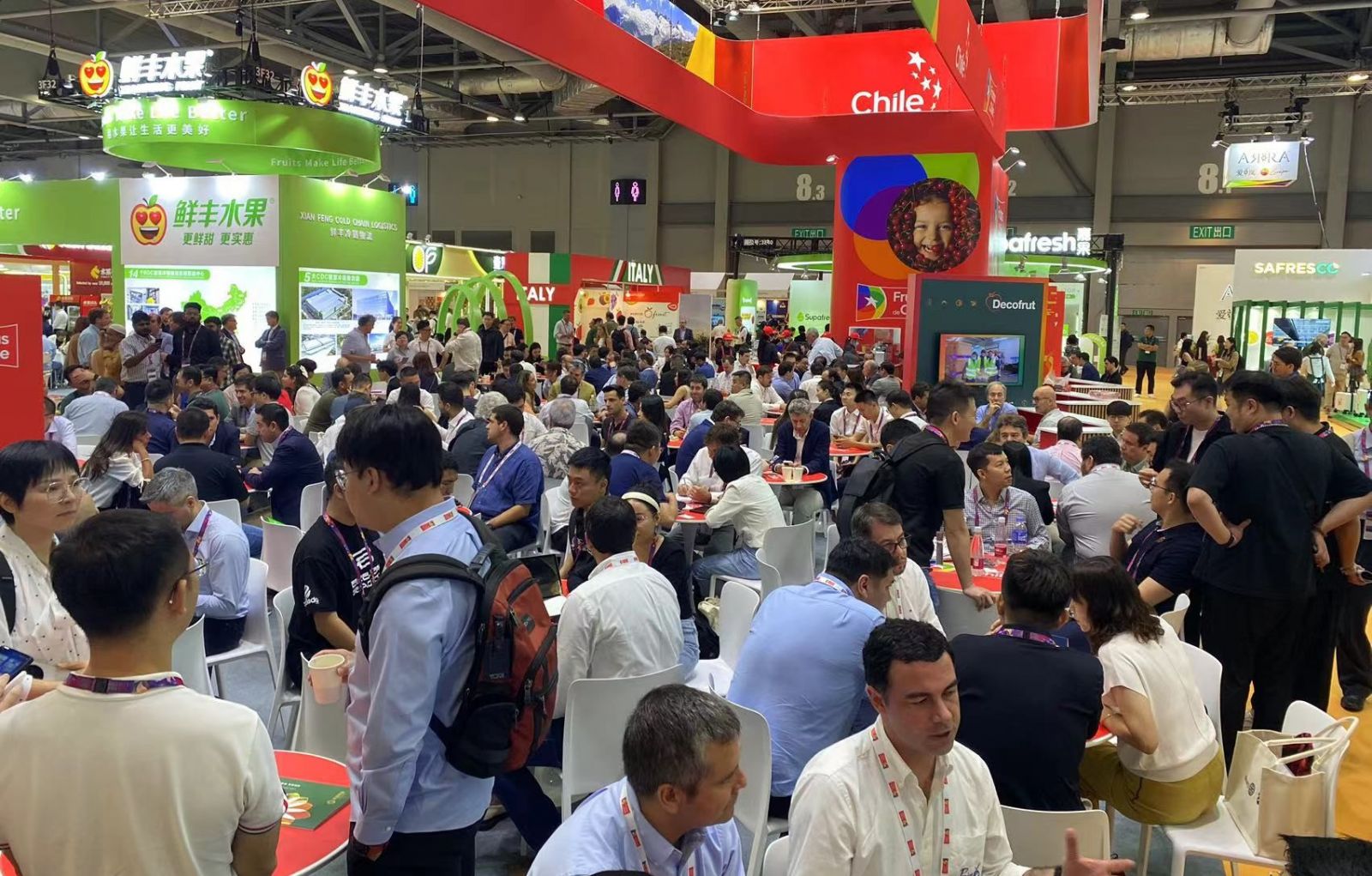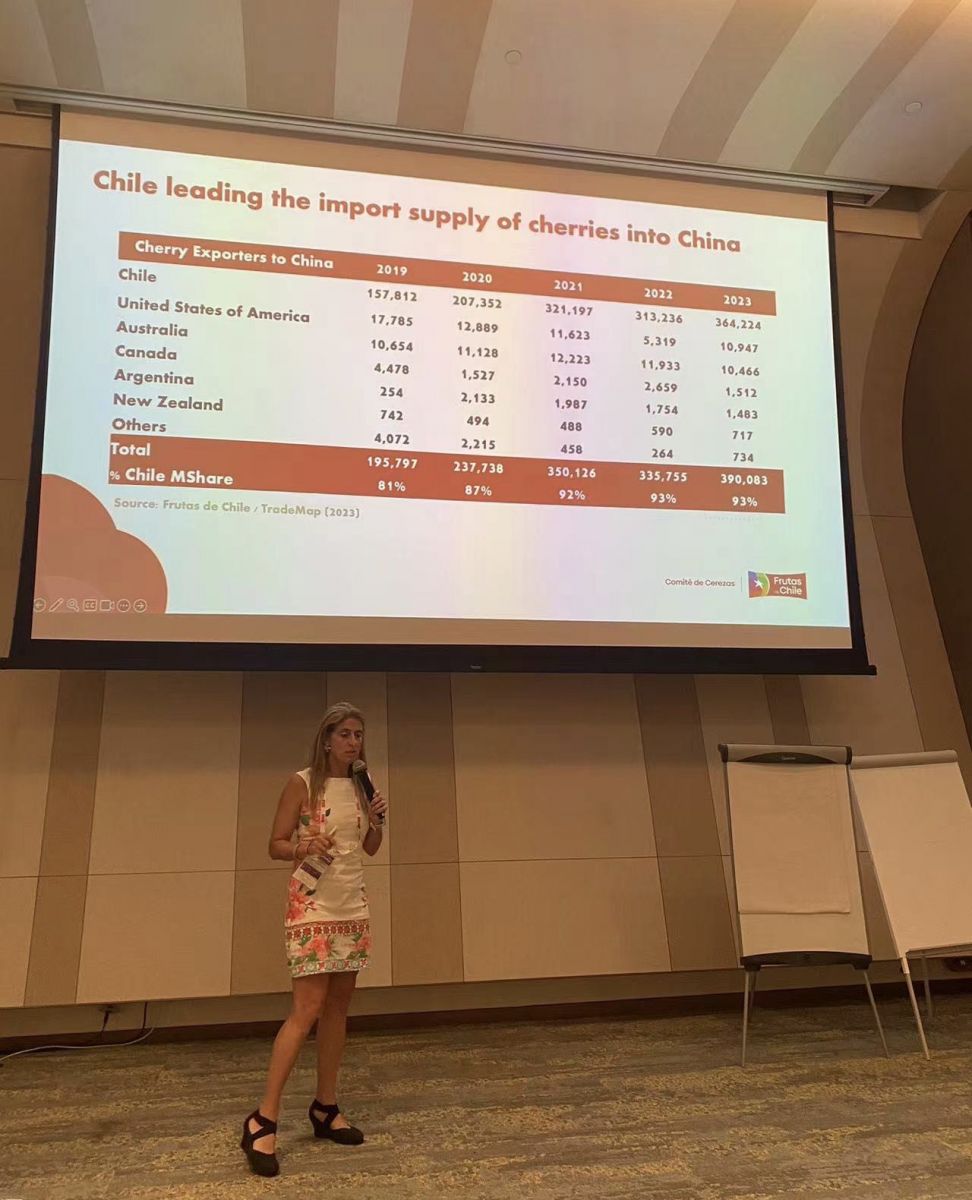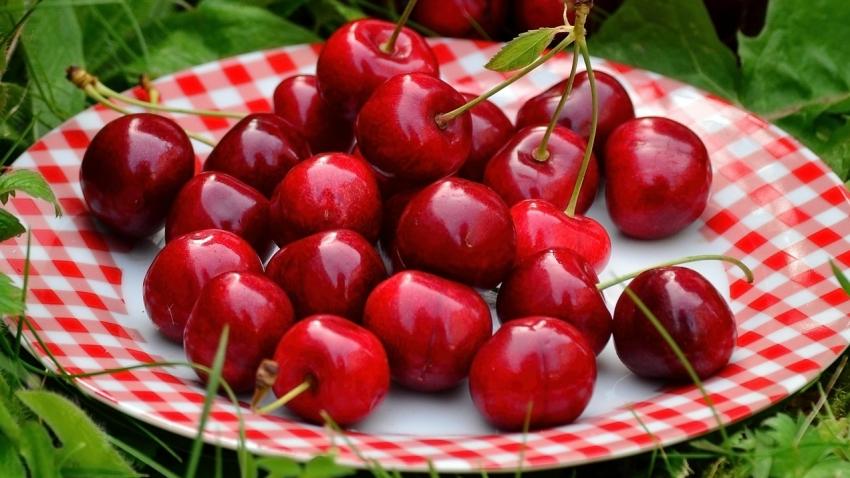You are here
Back to topChilean Fruit Industry Showcases New ‘Frutas de Chile’ Branding at Asia Fruit Logistica

The Chilean fruit export industry recently showcased its new brand Frutas de Chile at the Asia Fruit Logistica expo, which was held on Sept. 4–6 in Hong Kong. This change unifies the previous organizational brand of the Chilean Fruit Exporters Association (ASOEX) and the various category brands used globally in trade and consumer promotions. The Frutas de Chile branding reflects the association’s broader focus on promoting all Chilean fruit exports under a single consumer-friendly identity.

The switch from ASOEX (an abbreviation derived from the Spanish for “Chilean Fruit Exporters Association”) to Frutas de Chile (Spanish for “Fruits from Chile”) officially came at the end of 2023. Thanks to Chile’s longstanding market position and excellent reputation in Asian markets, the Frutas de Chile pavilion at Asia Fruit Logistica bustled with activity during this 17th edition of the trade show. The pavilion hosted an unprecedented number of exhibitors, with a delegation of more than 200 people — including 86 exporters and growers — gathered in Hong Kong. Concurrent with the exhibition, Frutas de Chile held a workshop on the upcoming Chilean cherry season, where the association’s senior executives provided a detailed analysis of their “2024/25 Chilean Cherry Asia Market Promotion Plan” to attendees.

During the workshop, which was held on Sept. 5, Iván Marambio, president of Frutas de Chile, outlined the scope of the Chilean fruit export industry and its importance in the Asia region. “Every day more than 82 million people enjoy a piece of Chilean fruit,” said Marambio. “Of all the fruits Chile exports, 30% are destined for Asian markets.”

Next, Ignacio Caballero, Frutas de Chile’s global marketing director, explained the association’s new brand image. A key point of the new identity is that it will unify both consumer-facing and industry-facing branding under one umbrella, with a unified message and visual language across product categories. Caballero emphasized that the association is committed to enhancing the competitiveness of Chile’s fruit industry through supplying high-quality fruit.

The workshop focused on Chilean cherries and the China market, a topic of great interest to members of China’s fruit industry due to the strong sales and favorable prices enjoyed by cherries there. According to Claudia Soler, executive director of Frutas de Chile’s Chilean Cherry Committee, “we expect to export over 521,000 tons of cherries to the Chinese market during the 2024/25 season, amounting to more than 28,000 containers. With the introduction of new cherry varieties, more cherries will be available early in the season compared to previous years, but peak production will still be concentrated towards the end of the year, as it has been historically.”
Given that Chilean cherry exports are projected to increase by 39% in the 2024/25 season compared with last season, and with the majority destined for the Chinese market, the Chilean Cherry Committee will implement a series of promotions to attract new consumer groups while also increasing the consumption by existing customers, further boosting the market growth of cherries during the winter season.

In his presentation, Charif Christian Carvajal, Frutas de Chile’s marketing director for Asia and Europe, delved into China’s consumer trends, purchasing behaviors at different times, key demands from consumers for imported cherries and the consumption scenarios for cherries. Based on this analysis, he outlined a market promotion strategy for Chilean cherries that segments the campaign into different stages of the cherry season.
In terms of geographic reach, in addition to continuing to focus on four major first-tier cities, this season’s campaign will emphasize eight rapidly growing second-tier cities and 10 high-potential second- and third-tier cities, while also penetrating to 78 third- to fifth-tier cities. With promotional efforts across 100 cities, the aim is to tap into the consumption potential of China’s less developed regional markets, which is believed to be growing more rapidly than that of first-tier cities such as Beijing, Shanghai and Shenzhen in recent years.
During the seminar, Frutas de Chile formally announced the release of its new “Chilean Cherry Best Practices Guide.” This industry-oriented guide provides detailed recommendations for best practices throughout the entire fresh cherry supply chain, from growing, harvesting, processing and logistics to sales, with the goal of promoting the high-quality development of the cherry industry alongside importers, distributors and retailers in Asian markets. Promulgating best practices for storage and handling will be particularly important as more cherries make their way to the aforementioned lower-tier regional markets in China, which generally involve longer supply chains and take more transit time to reach.

During the exhibition, representatives from Frutas de Chile met with the China Regional Fruit Stores Alliance and presented the new cherry guide. The alliance currently operates 1,600 stores across 11 sales channels, covering numerous provinces and cities across China from Inner Mongolia to Guangdong. Both parties will explore possible future cooperation models to expand the consumer base and drive growth in the cherry category.
After years of market cultivation, Chilean cherries have transitioned from being a festive treat exclusive to Chinese New Year to becoming a staple in the daily diets of consumers. For the upcoming 2024/25 season, Chilean cherries will launch a comprehensive online and offline campaign with the theme “Get Hooked on Happiness” aimed at bringing more delicious, high-quality cherries to even more Chinese consumers.
Images: Global Produce Events (HK) Co., Limited (main image), © 2024 Produce Report (body images)














Add new comment